Search results for: 'mit'
-
 Egyptian ushabti for Somtus-tefnacht
Egyptian ushabti for Somtus-tefnachtThe mummiform funerary figurine dates to the Late Period of ancient Egypt, 26th to 31st dynasty. It is remarkable that it probably originates from the burial of two brothers, Somtus-tefnacht and Somtus-tefnacht.
Price: on request Egyptian ushabti for Somtus-tefnacht
Egyptian ushabti for Somtus-tefnachtThe mummiform funerary figurine dates to the Late Period of ancient Egypt, 26th to 31st dynasty. It is remarkable that it probably originates from the burial of two brothers, Somtus-tefnacht and Somtus-tefnacht.
Price: on request Ushabti for Somtus-tefnacht
Ushabti for Somtus-tefnachtThe mummiform funerary figurine dates to the Late Period of ancient Egypt, 26th to 31st dynasty. It is remarkable that it probably originates from the burial of two brothers, Somtus-tefnacht and Somtus-tefnacht.
Price: on request Egyptian ushabti for Somtus-tefnacht
Egyptian ushabti for Somtus-tefnachtThe mummiform funerary figurine dates to the Late Period of ancient Egypt, 26th to 31st dynasty. It is remarkable that it probably originates from the burial of two brothers, Somtus-tefnacht and Somtus-tefnacht.
Price: on request Egyptian ushabti for Somtus-tefnacht
Egyptian ushabti for Somtus-tefnachtThe mummiform funerary figurine dates to the Late Period of ancient Egypt, 26th to 31st dynasty. It is remarkable that it probably originates from the burial of two brothers, Somtus-tefnacht and Somtus-tefnacht.
Price: on request Egyptian ushabti for Somtus-tefnacht
Egyptian ushabti for Somtus-tefnachtThe mummiform funerary figurine dates to the Late Period of ancient Egypt, 26th to 31st dynasty. It is remarkable that it probably originates from the burial of two brothers, Somtus-tefnacht and Somtus-tefnacht.
Price: on request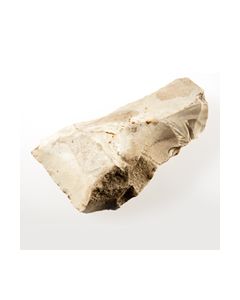 Flachgeschlagenes Scheibenbeil aus Dänemark
Flachgeschlagenes Scheibenbeil aus DänemarkFrüher Beiltyp der nordeuropäischen Steinzeit. Ertebølle-Kultur. 5400 v. Chr. bis 4100 v. Chr. Spätmesolithikum. Fund von der Insel Seeland, Dänemark.
Price: on request Republikanischer Denar des L Calpurnius Piso Frugi
Republikanischer Denar des L Calpurnius Piso FrugiNach rechts galoppierender Reiter, im Rücken Palmzweig, darüber Dreizack. Aus Generationensammlung, vom Leibarzt des Prinzen Karl von Preußen im 19. Jh. begründet.
Price: on request Egyptian scarab with papyrus plants
Egyptian scarab with papyrus plantsScarab amulet made of bright, almost white steatite. 13th to 15th dynasty. This scarab is described in the catalogue of Irène Gautier-Vodoz.
Price: on request Scarab with scarab motive
Scarab with scarab motiveThe stamp side shows a scarab with two uraeus snakes. This scarab is described in the catalogue of Irène Gautier-Vodoz.
Price: on request Scaraboid with twisted cord
Scaraboid with twisted cordScaraboid seal amulet with a twisted cord motive. This scarab is described in the catalogue of Irène Gautier-Vodoz.
Price: on request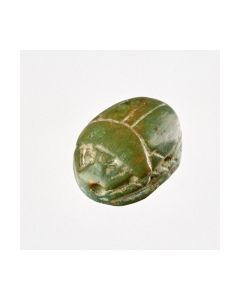 Scarab with Amun inscription
Scarab with Amun inscriptionBearing the hieroglyphs "the god Amun of Theben is lord". From the Late Period of ancient Egypt. Beautiful green stone.
Price: on request Clay figurine of Harpokrates from the Fayum
Clay figurine of Harpokrates from the FayumSehr fein gearbeitetes Stück, auch kleine Details von Mimik und Kopfschmuck sind vollständig herausgearbeitet und exzellent erhalten.
Price: on request Neolithic thin butted axe head
Neolithic thin butted axe headDünnnackige Beilklinge der Trichterbecherkultur, Dolmenzeit bis Ganggrabzeit. Präzise aus schönen, grauen Flint gearbeitet.
Price: on request Rectangular axe head
Rectangular axe headDünnnackiger Beilkopf der Trichterbecherkultur, Dolmenzeit bis Ganggrabzeit. Sehr schön bearbeiteter grauer Flint.
Price: on request Spitznackiges Beil der Älteren Trichterbecherkultur
Spitznackiges Beil der Älteren TrichterbecherkulturSpitzovales Längsprofil, grob bearbeitete Seiten, teilweise poliert. Typische für die Ältere Trichterbecherkultur, 4200 bis 3300 v. Chr.
Price: on request Scarab with geometric motive
Scarab with geometric motiveThe lower side exhibits a symmetrical arrangements of cords, two of which are wrapped around each other. This scarab is described in the catalogue of Irène Gautier-Vodoz.
Price: on request Egyptian ushabti for Ra-mes
Egyptian ushabti for Ra-mesThe mummiform funerary figurine dates to the Late Period of ancient Egypt, 26th to 31st dynasty. It is remarkable that it probably originates from the burial of two brothers, Ra-mes and Somtus-tefnacht.
Price: on request Römischer Votivspiegel aus Blei
Römischer Votivspiegel aus BleiRückseite eines römischen Spiegels. Verziert durch konzentrisch angeordnete Kreise und radiales Dekor.
Price: on request Römischer Votivspiegel aus Blei
Römischer Votivspiegel aus BleiVorderseite eines römischen Spiegels. Verziert durch Dekor aus Kügelchen und Linien. Es handelt sich um eine Votivgabe.
Price: on request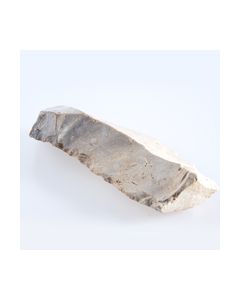 Neolithische Sichel
Neolithische Sichel128mm lang. Opfergabe oder Arbeitsgerät. Aus der Endphase des nordeuropäischen Neolithikums, Dolchzeit, 2400 v. Chr. bis 1700 v. Chr.
Price: on request Mesolithische Axt
Mesolithische Axt9000 v. Chr. bis 4000 v. Chr., Fundort: Küste bei Assens, Fünen, Dänemark.
Price: on request Egyptian amulet of a falcon
Egyptian amulet of a falconThe falcon in Egyptian art can be a depiction of the god Horus or symbolize the soul of the pharao. Falcon amulets are known from the earliest times in Egyptian history. However this speicmen dates to the Late Dynastic Period of Ancient Egypt.
Price: on request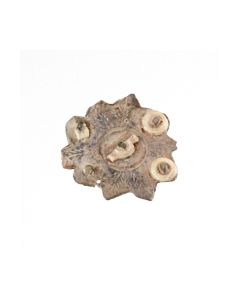 Elaborate Roman plate brooch
Elaborate Roman plate broochTen pointed star form with leaf pattern and decorative buttons. A product of Gaul or Britain dating to the 1st century.
Price: on request Large Roman jar from Lopodunum
Large Roman jar from LopodunumPerfectly preserved piece from the second half of the 2nd century AD. Found in Ladenburg, Baden-Wuerttemberg, Germany.
Price: on request Megarian bowl with floral decoration
Megarian bowl with floral decorationNicely preserved piece from a private Columbus (Ohio, USA) collection
Price: on request Spindle-shaped unguentarium
Spindle-shaped unguentariumSpindelförmiges, späthellenistisches bis römisch-augusteisches Unguentarium aus hellem Ton. Ca. 1. Jh. v. Chr. bis 1 Jh. n. Chr.
Price: on request Hellenistic-Roman gold ear ring - in a British collection since 1900
Hellenistic-Roman gold ear ring - in a British collection since 1900Reich verziertes, filigran gearbeitetes Kunstwerk antiker Goldschmiede. Aus einer britischen Privatsammlung, in den 1940er Jahren durch Erbschaft erlangt, in diese erworben um 1900.
Price: on request Späthellenistisches Unguentarium
Späthellenistisches UnguentariumFein gearbeitetes spindelförmiges Fläschchen aus Ton. Keine Verjüngung zwischen Fuß und Körper. Seltene Variante.
Price: on request Neolithische Streitaxt
Neolithische StreitaxtEindrucksvolle Streitaxt der Einzelgrabkultur aus schwarz-weiß gemasertem Stein. Mittelneolithikum, ca. 3000 bis 2500 v. Chr. Perfekter Zustand. 115mm lang.
Price: on request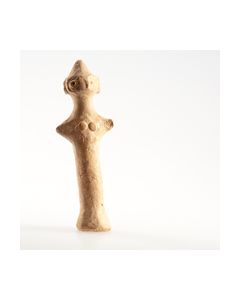 Baal-Figur, Levante
Baal-Figur, LevanteGötterfigur von der Levante, vermutlich Syrien. Bronzezeit, 3000 bis 1200 v. Chr. Seltenes Zeugnis einer frühen, bronzezeitlichen Religion.
Price: on request Three Roman beads
Three Roman beadsOne bead from white glass. Two eye beads made of beautiful cyan coloured glass with yellow-green inlays. Early Roman.
Price: on request Roman marble torso of a youth
Roman marble torso of a youthFrom an important Swiss private collection. Very impressive, excellently preserved piece.
Price: on request Vorzüglicher Denar des Galba
Vorzüglicher Denar des GalbaWundervolles Portrait eines typischen römischen Aristokraten. Seltenheit RIC Rare. Aus Generationensammlung, vom Leibarzt des Prinzen Karl von Preußen im 19. Jh. begründet.
Price: on request Roman glass paste
Roman glass pasteThis glass paste is made of beautiful yellow glass. Roman Imperial.
Price: on request Roman intaglio
Roman intaglioNice orange glowing glass paste imitating carnelian. Gemstone from Roman times.
Price: on request

